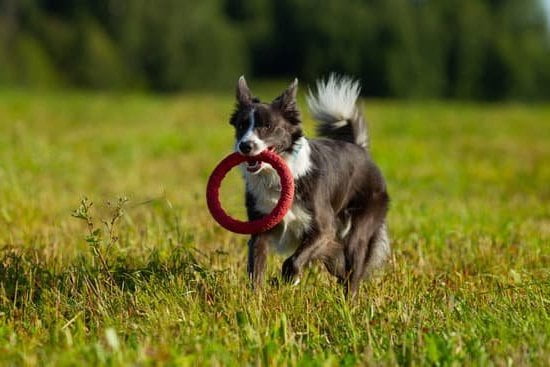Are you wondering how to train your dog on a puppy pad? Puppy pads can be a valuable tool for pet owners, especially for those living in apartments or with limited outdoor space. In this article, we will explore the importance of puppy pads and provide tips on training your dog to use them effectively.
Puppy pads help to maintain cleanliness in the home and provide a convenient solution for indoor potty training. Training your dog to use a puppy pad can also be beneficial during periods of extreme weather or when outdoor access is limited. By understanding the significance of puppy pads and implementing an effective training routine, you can ensure a happier and more hygienic living environment for both you and your furry companion.
In the following sections, we will discuss key aspects of training your dog on a puppy pad, including choosing the right type of pad, setting up the training area, positive reinforcement techniques, consistency in training, handling accidents, transitioning to outdoor potty training, and troubleshooting common challenges. By following these guidelines, you can successfully train your dog to use a puppy pad and minimize accidents in the home.
Choosing the Right Puppy Pad
When it comes to training your dog on a puppy pad, one of the key factors to consider is choosing the right type and size of the pad. This decision can greatly impact the effectiveness of the training process and your dog’s comfort. Here are some tips to help you make the best choice for your furry friend.
Absorbency and Material
When selecting a puppy pad, it’s important to consider its absorbency level and material. Look for pads that are highly absorbent to prevent leaks and keep your floors clean. Additionally, consider the material of the pad. Some dogs may have sensitivities to certain materials, so choosing a hypoallergenic option can be beneficial.
Size and Coverage
The size of the puppy pad is also an important factor to consider. Larger dogs will require larger pads to ensure adequate coverage during potty breaks. It’s ideal to choose a pad that offers enough space for your dog to comfortably use without missing the designated area.
Odor Control
Another aspect to look into when choosing a puppy pad is its odor control capabilities. Some pads come with built-in odor neutralizers, which can be beneficial in maintaining a fresh and clean environment in your home.
By carefully considering these factors, you can select a puppy pad that best suits your dog’s needs and facilitates effective potty training. Remember that each dog is unique, so it may take some trial and error to find the perfect fit for your furry companion as you work on how to train your dog on a puppy pad.
Setting Up the Training Area
When setting up the training area for your puppy pad, it’s important to choose a spot in your home that is easily accessible to your dog, yet away from their sleeping and eating areas. This will help to establish a designated potty spot and reduce the likelihood of accidents. Choose an area with hard flooring, such as tile or wood, as this makes clean-up much easier in the event of any accidents.
Introducing the Puppy Pad to Your Dog
To introduce the puppy pad to your dog, place it in the designated spot and allow them to investigate it on their own. You can also try placing a few drops of your dog’s urine on the pad to help them associate it with their bathroom area. When you catch your dog sniffing or showing interest in using the puppy pad, be sure to offer plenty of praise and even a small treat as positive reinforcement.
Consistency in Training
Consistency is key when training your dog on a puppy pad. Take your dog to the puppy pad at regular intervals, such as after meals and naps, and especially first thing in the morning and before bedtime. Be patient with your dog during this training process; it may take some time for them to fully understand how to use the puppy pad effectively. With consistent training and positive reinforcement, they will eventually learn how to use the puppy pad properly.
Positive Reinforcement
When it comes to training your dog on a puppy pad, positive reinforcement is key. Using treats and praise can be effective in encouraging your dog to use the puppy pad consistently. Whenever your dog successfully uses the puppy pad, immediately reward them with a treat and lots of enthusiastic praise. This will create a positive association with using the pad and motivate your dog to continue doing so.
It is important to choose high-value treats that your dog loves and responds well to. Small, bite-sized treats that can be quickly consumed are ideal for use during puppy pad training sessions.
Additionally, verbal praise such as “good boy/girl” or “well done” should be given consistently when your dog uses the pad correctly. The combination of treats and praise will reinforce the desired behavior and make it more likely for your dog to repeat it in the future.
Consistency is crucial when using positive reinforcement for puppy pad training. It’s essential to reward your dog every time they use the pad correctly, especially during the early stages of training. Over time, you can gradually reduce the frequency of treats while still providing verbal praise, as your dog becomes more consistent in using the puppy pad.
In addition to rewards, it’s important to monitor your dog’s progress closely and make adjustments as needed. Some dogs may respond better to certain types of treats or specific forms of praise, so being observant and adaptable in your approach will help expedite the training process.
| Positive Reinforcement Techniques | Benefits |
|---|---|
| Using high-value treats | Motivates the dog to use the puppy pad consistently |
| Verbal praise | Reinforces positive behavior and creates a strong association with using the pad |
| Consistency | Gradually reduces dependency on treats while still providing encouragement |
Consistency Is Key
Establishing a regular schedule for potty breaks is essential when training your dog to use a puppy pad. Dogs thrive on routine, so it’s important to take them to the designated spot at the same times every day, such as first thing in the morning, after meals, and before bedtime. By consistently taking your dog to the puppy pad at these times, you’re reinforcing the behavior and helping them understand when it’s time to go potty.
In addition to maintaining a consistent schedule for potty breaks, it’s crucial to reinforce the training routine with positive reinforcement. Whenever your dog successfully uses the puppy pad, be sure to offer plenty of praise and a tasty treat as a reward.
This helps your dog associate using the puppy pad with good behavior and encourages them to continue doing so in the future. Positive reinforcement is an effective way to motivate your dog and make training on a puppy pad a positive experience for them.
Lastly, consistency also applies to how you handle accidents during the training process. If your dog has an accident outside of their designated potty times, simply clean up the mess without scolding or punishing them. Reacting negatively can confuse or scare your dog, making it harder for them to understand where they should go potty. Instead, stay patient and continue following the established schedule for potty breaks.
| Importance | Tip |
|---|---|
| Consistent schedule | Take your dog to the puppy pad at the same times every day |
| Positive reinforcement | Praise and reward your dog when they successfully use the puppy pad |
| Handling accidents | Clean up messes without scolding or punishment |
Handling Accidents
Accidents are an inevitable part of the training process when teaching your dog to use a puppy pad. It’s important to remain patient and understand that setbacks are normal. Here are some tips on how to handle accidents and continue with the training without any setbacks:
1. Clean up promptly: When accidents happen, it’s crucial to clean up the mess promptly and thoroughly. Use a pet-friendly cleaner to remove any odors and stains, as lingering smells can attract your dog back to the same spot for future accidents.
2. Avoid punishment: It’s important not to punish your dog for having accidents. Punishment can lead to fear and anxiety, making it even more challenging for them to learn. Instead, remain calm and redirect your dog to the designated potty area.
3. Revisit the training routine: If accidents become frequent, consider revisiting the training routine. Ensure that you’re taking your dog out for potty breaks at regular intervals, especially after meals, playtime, and naps. Consistency is key in reinforcing the desired behavior of using the puppy pad.
4. Monitor for signs: Pay attention to your dog’s behavior and body language, as they may exhibit signs that they need to go potty. If you notice these signs, guide them to the puppy pad immediately.
5. Patience is key: Remember that patience is crucial when it comes to training your dog on a puppy pad. Every dog learns at their own pace, so stay consistent with the training methods and be patient as your furry friend makes progress.
By following these tips and remaining consistent in your approach, you can effectively address accidents and continue training your dog on a puppy pad without experiencing major setbacks in the process.
Gradual Transition
When it comes to transitioning your dog from using puppy pads to outdoor potty training, it’s important to take a gradual approach to ensure a successful transition. Here are some tips to help you through this process:
- Start by moving the puppy pad closer to the door that leads outside. This helps your dog associate the act of going potty with being closer to the outdoors.
- Gradually move the puppy pad outside, closer to the area where you want your dog to do their business. This step may take some time, so be patient and allow your dog to adjust at their own pace.
- Once your dog is consistently using the puppy pad outside, you can begin removing it altogether and encouraging them to go potty directly outside. Be sure to praise and reward your dog when they successfully use the outdoor area for potty breaks.
It’s important to remember that this transition may not happen overnight, and some dogs may require more time and patience than others. Stay consistent with your training routine and continue providing positive reinforcement as your dog makes progress.
As you work on transitioning from puppy pads to outdoor potty training, keep an eye out for any accidents or setbacks. If your dog struggles with the transition, consider taking a step back and reintroducing the puppy pad indoors before attempting the outdoor transition again.
With patience and consistency, you can effectively train your dog on a puppy pad and successfully transition them to outdoor potty training. Remember that every dog is unique, so be prepared to adjust your approach based on your pet’s individual needs.
Troubleshooting Common Challenges
In conclusion, training your dog to use a puppy pad can be a beneficial and convenient solution, especially for those who live in apartments or have limited outdoor space. By understanding the importance of puppy pads and following the tips provided for choosing the right one, setting up the training area, using positive reinforcement, and maintaining consistency, you can successfully teach your dog to use the puppy pad.
It’s essential to be patient and consistent with the training process, as every dog learns at their own pace.
One of the most crucial aspects of training your dog on a puppy pad is to address common challenges that may arise. This includes resistance to using the pad or reluctance to transition to outdoor potty training. By troubleshooting these issues and adjusting your training approach as needed, you can overcome obstacles and ensure that your dog becomes comfortable with using the puppy pad.
Remember that gradual transition from puppy pads to outdoor potty training is also an important step in the process. Once your dog has consistently used the pads indoors, slowly introducing them to outdoor potty breaks can help them adjust to using different surfaces for their bathroom needs. With patience, positive reinforcement, and a proactive approach to troubleshooting challenges, you can successfully train your dog on a puppy pad and set them up for success in their potty habits.
Frequently Asked Questions
How Do I Get My Dog to Pee on a Puppy Pad?
The key to getting your dog to pee on a puppy pad is consistency and positive reinforcement. Start by placing the pad in a designated area and guiding your dog to it regularly. When they use the pad, reward them with praise or treats.
How Long Does It Take to Train a Puppy on Puppy Pads?
Training a puppy to use puppy pads can take anywhere from a few weeks to a few months, depending on the dog’s age, breed, and individual personality. Consistent training and patience are essential for success.
How Do I Attract My Dog to Pee Pad?
To attract your dog to use a pee pad, you can try placing some of their urine on the pad or using an attractant spray specifically designed for this purpose. Additionally, praising and rewarding your dog when they use the pad can also help reinforce this behavior.

Welcome to the blog! I am a professional dog trainer and have been working with dogs for many years. In this blog, I will be discussing various topics related to dog training, including tips, tricks, and advice. I hope you find this information helpful and informative. Thanks for reading!





